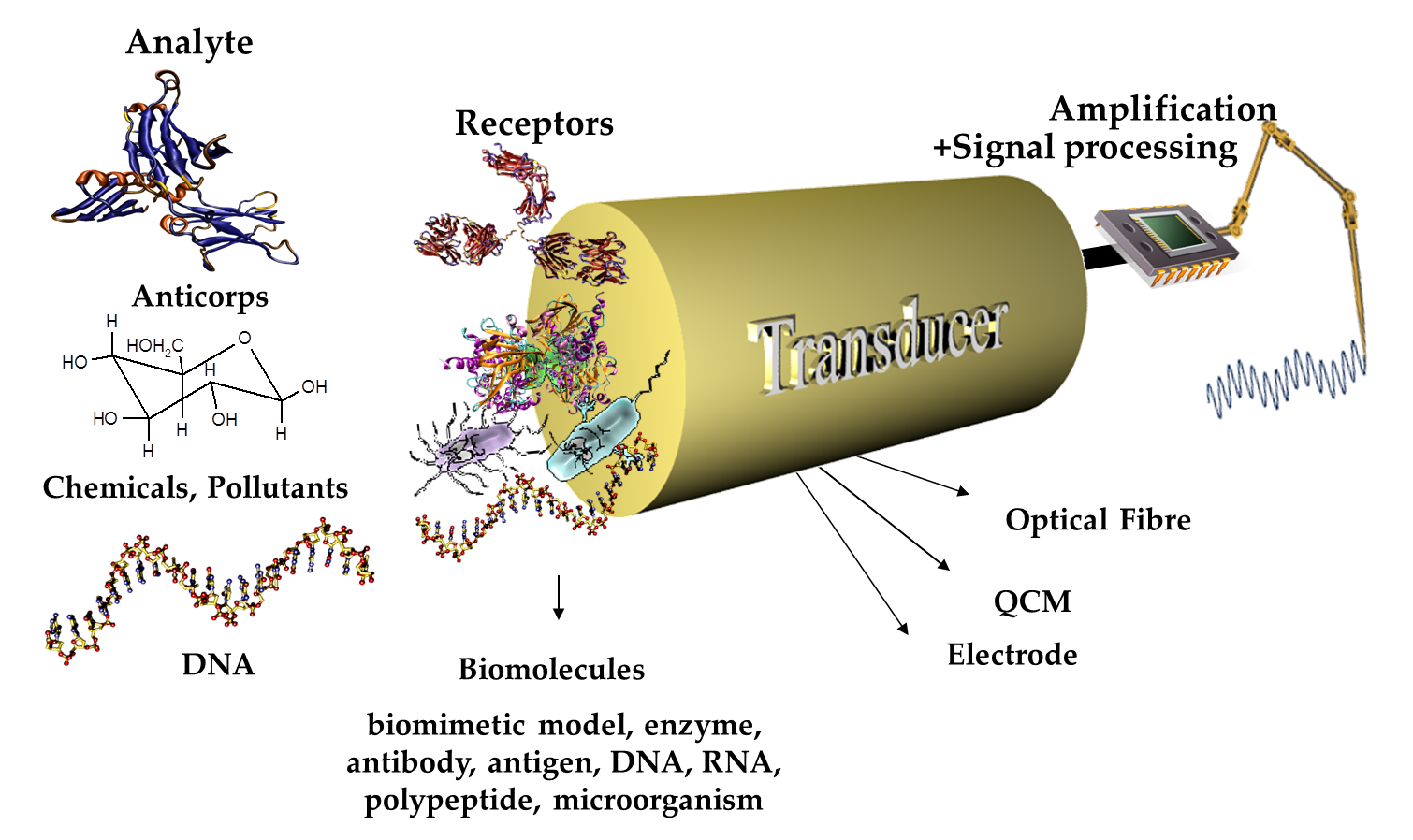- Imprimer
- Partager
- Partager sur Facebook
- Partager sur X
- Partager sur LinkedIn

A biosensor device consists of the sensitive biological element (eg. tissue, microorganisms, organelles, cell receptors, enzymes, antibodies, nucleic acids, etc), the transducer or the detector element that transforms the signal, resulting from the interaction of the analyte with the biological element, into a measurable signal using e.g. electrochemistry, gravimetry or optical measurements.
One of the constant challenges met by biosensing devices is the immobilization strategy used to conjugate intimately the bio-specific entity onto the transducer. Our goal is to develop efficient immobilization procedures for bioreceptor molecules by preserving entirely their biological activity. Together with such immobilization techniques, we incorporate functional nanostructured materials as interface in our biosensor setups improving drastically the performances. The developed procedures and setups are then tested and optimized for different transduction techniques.
- Imprimer
- Partager
- Partager sur Facebook
- Partager sur X
- Partager sur LinkedIn